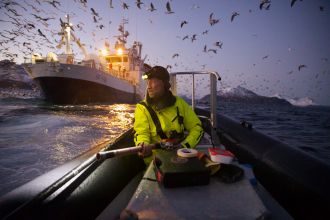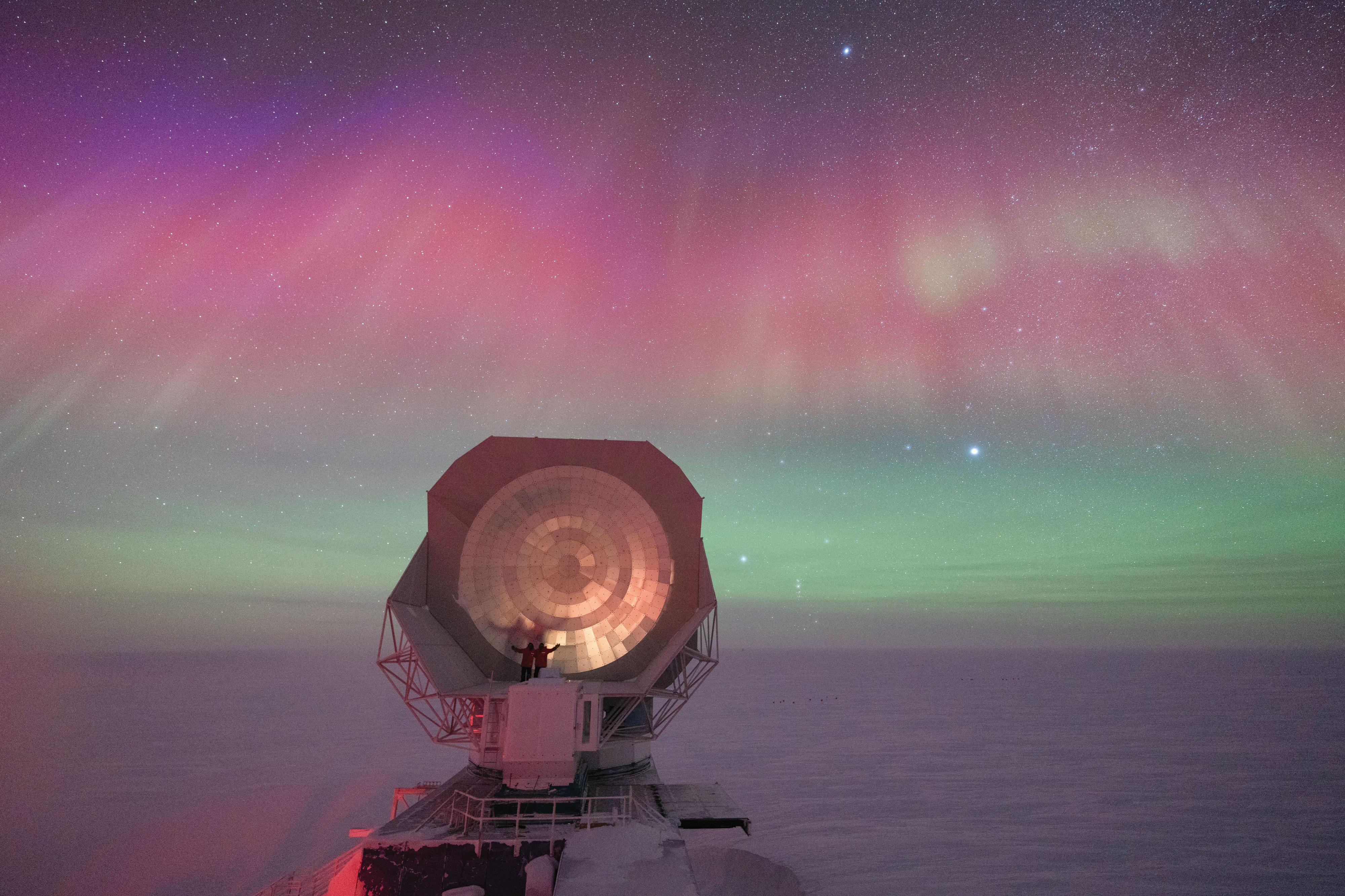Media release
From:
A scientist braving crashing waves to track whales in a northern Norwegian fjord tops a list of winners of Nature’s 2025 Scientist At Work competition. Arctic telescopes, tiny frogs, and mountain fog also feature in the top six images showcasing the fieldwork of scientists.
The Scientist At Work competition, now in its sixth year, invites Nature readers to share photos that showcase the diverse, interesting, challenging, striking and colourful work that scientists do around the world. The winners are selected by a jury of Nature staff.
From over 200 entries this year, six winners were selected. The overall winner was a photo of biologist Audun Rikardsen — taken by his PhD student Emma Vogel from the University of Tromsø — scanning the waters for whales near fishing trawlers in the fjords of northern Norway. Rikardsen is holding an airgun, used to deploy satellite tags that track the movement and behaviour of whales. “You could smell their breath,” says Vogel. “And you could hear them before you can see them, which is always quite incredible.”
Another winning photo is of Kate Belleville from the California Department of Fish and Wildlife who is seen holding tiny froglets in California’s Lassen National Forest. The photo was taken by Ryan Wagner, from Washington State University Vancouver, who also had a winning entry last year, a first for the competition.
Other winners include an image of the vast South Pole Telescope at the Amundsen–Scott South Pole station, taken during Aman Chokshi’s stay at the research station, lit by an aurora overhead, and a photo of the boring of an ice core by geobiologist James Bradley and microbiologist Catherine Larose in the Norwegian archipelago of Svalbard, taken by Dagmara Wojtanowicz. An image captured by Lionel Favre from the Swiss Federal Institute of Technology of his colleague Michael Lonardi with a weather balloon in the fog on Mount Helmos in Greece was also amongst the winners.
The silhouette of Hao-Cheng Yu, from the China University of Geosciences, entering a cabin set within a dark backdrop and a starlit sky, features in the final winning photo. His colleague Jiayi Wang took the shot and despite the beautiful looking setting, Wang explains that long periods of working in remote locations can sometimes be tedious. “There’s no network there. And the only thing you can do is watch the rocks.”
Multimedia









 Australia; International; VIC
Australia; International; VIC



